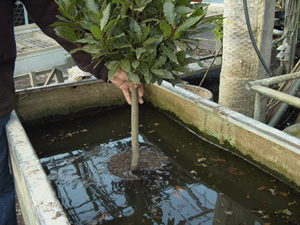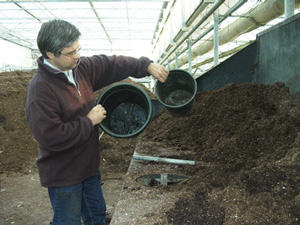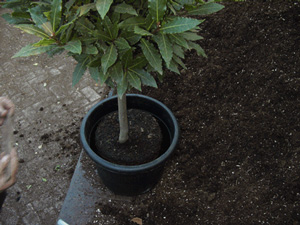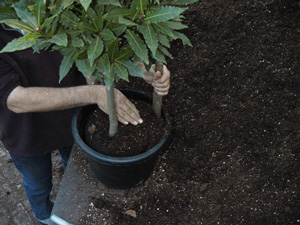Love this presentation. Super pot/plant combinations. The Bay trees really complete the setting.
Surprise mum with a bay tree — source of beauty
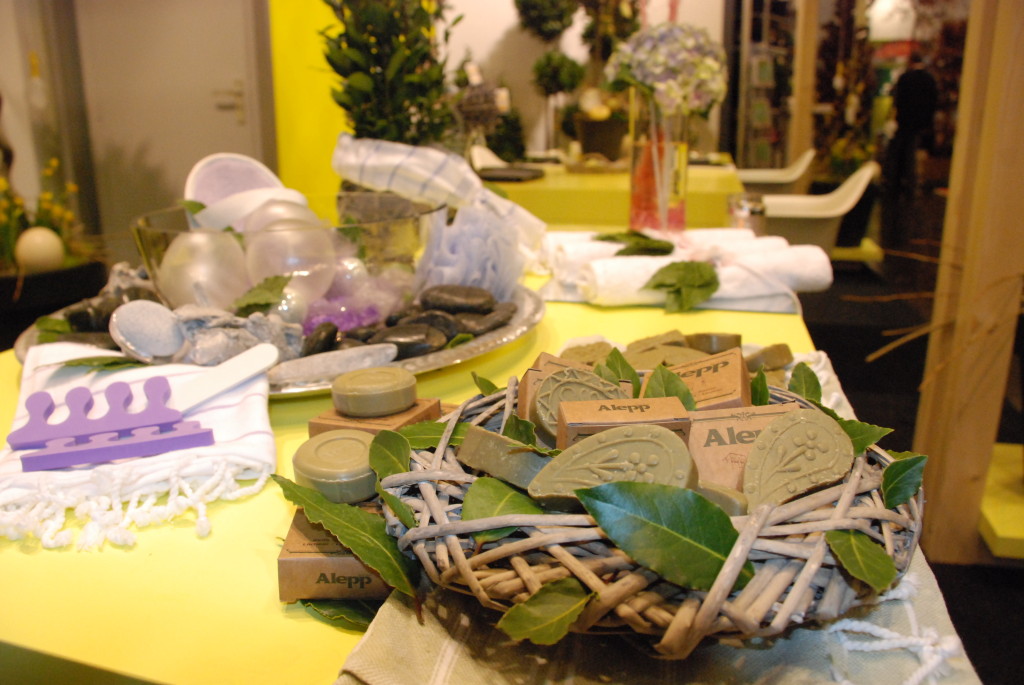 The bay laurel is not only an aromatic plant but has also been valued for thousands of years for its cleansing properties. The bay laurel was even a product that helped launch today’s cosmetics industry: laurel oil is the essential ingredient in the world’s first solid soap, the more than 1,000-year-old “Mother of All Soaps” — Aleppo soap — whose quality is rated by its laurel oil content.
The bay laurel is not only an aromatic plant but has also been valued for thousands of years for its cleansing properties. The bay laurel was even a product that helped launch today’s cosmetics industry: laurel oil is the essential ingredient in the world’s first solid soap, the more than 1,000-year-old “Mother of All Soaps” — Aleppo soap — whose quality is rated by its laurel oil content.
Aleppo soap blends the softness of olive oil and the restorative effect of the laurel into a pure, mild soap. It is especially recommended for those with sensitive or damaged skin.
Aleppo soap works by moisturising and nourishing the skin: just a few days’ experience will make it clear what it does to your skin. Aleppo soap is 100% vegetable-derived, fully biodegradable, and one bar will go a very long way.
As its name suggests, the soap comes from the city of Aleppo — a Silk Route settlement of old, trading goods from Mesopotamia, and one of the world’s oldest cities. Cosmetics were being manufactured here well over 4,000 years ago.
The original Arabic name for Aleppo soap is sapun ghar, literally ‘soap of laurel’. In later centuries, the Crusaders brought Aleppo soap back to Europe, where its adaptation, savon de Marseille, became the basis of European soap making.
Tip for use: Do not leave the soap in a wet basin, as it will soften and begin to melt. That would be such a shame, so keep the soap bar going for longer by air-drying it in a dry saucer or dish.
Artist transforms Laurus hedge in Copenhagen
Thanks for the great pictures Ester!
Fertilizing & Repotting Laurus nobilis
Fertilizer
- In May and July you can add fertilizer.
- We recommend a dried organic fertiliser to be put on the pot. As a rule you give 1 handfull per 10 liters potcontents.
- You can also use a slow-working fertilizer like osmocote (3 months). This should be added in May.
- No fertilizer should be added after August.
Repotting
Care Calender Bay Tree
| January | Do not forget to water once a month |
| February | Do not forget to water once a month |
| March | Start watering more frequently |
| April | Start watering more frequently |
| May | Place bay tree outdoors, Summer care, fertilize |
| June | Any pruning should be done before Midsummer’s Day (21 June) |
| July | Fertilize |
| August | |
| September | If your bay tree is to be re-potted, do so now |
| October | |
| November | Bring bay tree indoors, Winter care |
| December | Prune |
Neither witch nor devil, thunder nor lightning will hurt a man where a Bay Tree is
Nicolas Culpepper
Iced Oranges
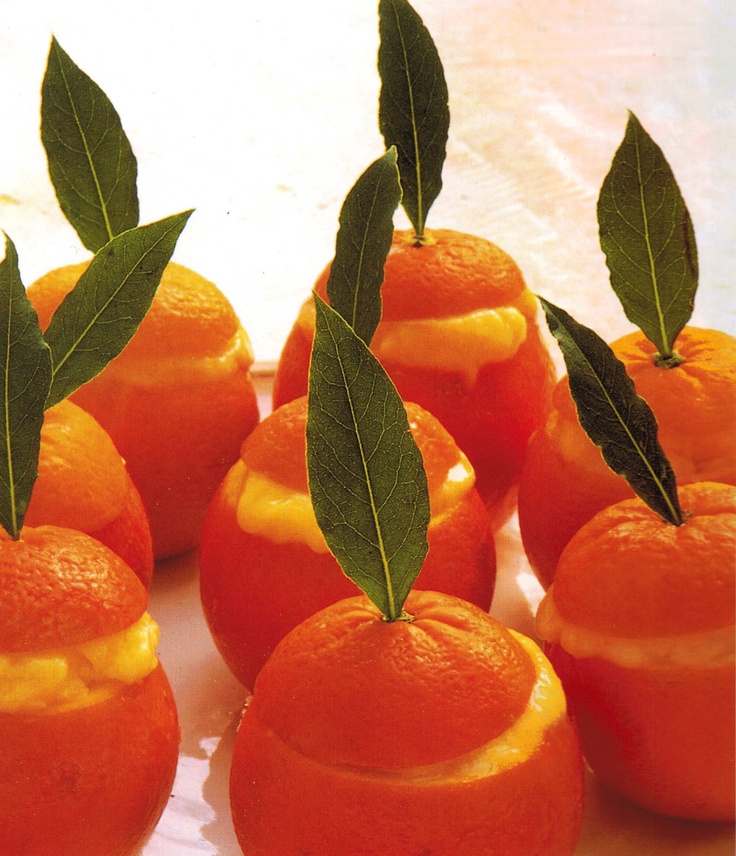 Ingredients
Ingredients
- Serves 8
- 5oz/150g granulated sugar
- Juice of 1 lemon
- 4fl oz/120ml water
- 14 oranges
- 8 fresh bay leaves to decorate (or mint if this is more readily available)
Preparation
- Put the sugar in a heavy-based saucepan. Add half the lemon juice, then add the water. Cook over a low heat until the sugar has dissolved. Bring to boil and boil for 2-3 minutes until the syrup is clear.
- Slice the tops off eight of the oranges to make “hats”. Scoop out the flesh of the oranges and reserve. Freeze the empty orange shells and “hats” until needed.
- Grate the rind of the remaining oranges and add to the syrup. Squeeze the orange juice from the oranges, and from the reserved flesh. There should be 1¼pints/750ml. Squeeze another orange or add bought orange juice, if necessary.
- Stir the orange juice and remaining lemon juice, with 6 tablespoons/90ml of water into the syrup. Taste, adding more lemon juice or sugar as desired. Pour the mixture into a shallow freezer container and freeze for 3 hours.
- Turn the orange sorbet mixture into a bowl and whisk thoroughly to break up ice crystals. Freeze for 4 hours more, until firm, but not solid.
- Pack the mixture into the hollowed-out orange shells, mounding it up, and set the “hats” on top. Freeze until ready to serve. Just before serving, push a skewer into the tops of the “hats” and push in a bay leaf (mint) to decorate.
Enjoy!
Recipe taken from “The Fat-Free Cook Book”
Summer Care Laurus nobilis
- After the middle of May there is little risk in putting the Bay outside.
- The plant can be put in full sun, but it flourishes in shade as wel.
- The bay should be watered regularly during the summer (daily when placed in full sun). Please note that the bay does not remain with its feet in the water.
- During the summer, your Bay will show when it is thirsty; the young shoots will ‘curl’. If you water the plant, everything will be back to normal within a few hours.
Winter Care, Laurus nobilis
- Because of its mediteranean origin, the baytree is moderately frost hardy.
- You can keep your bay in shape if you hibernate it from November to March in a frost-free place (2-10 °C). This is the ‘rest periode’ of the Bay tree. The growth has stopped completely. Therefore you should not water the bay too much. At a temperature of 5 °C the Bay should be watered every 6 weeks. It is important that you do not allow the soil to dry out. Too much water is not good for the Bay. The leaves will turn yellow and fall.
- When there is not enough water, the leaves will turn greyish and crispy.
- If you want to enjoy your bay as long as possible, you can leave your bay outside as long as it does not freeze. Just remember to put it inside when the frost comes. If you want to be absolutely sure, just store your bay in a frost-free place. Light is not necessary, providing the plant is allowed to get accustomed to the bright spring sunlight. o not place the Bay immediately in full sun to prevent leaf scorch







